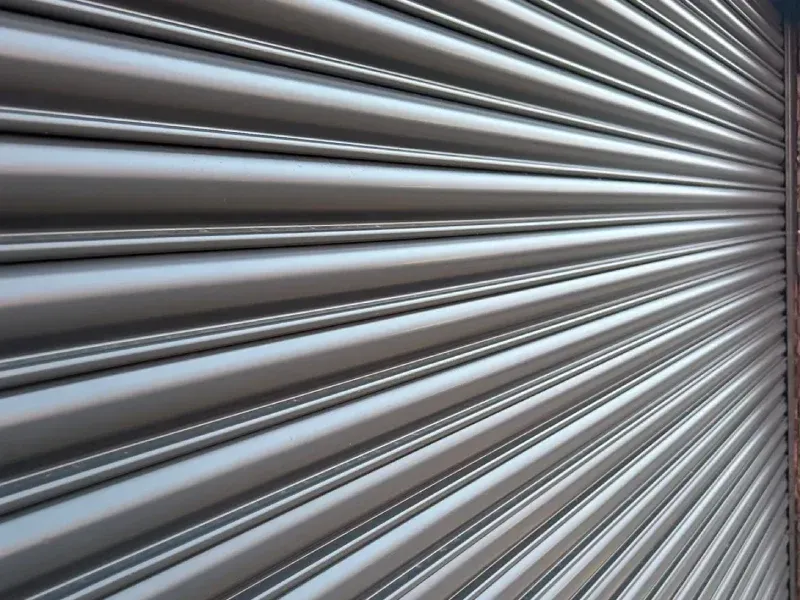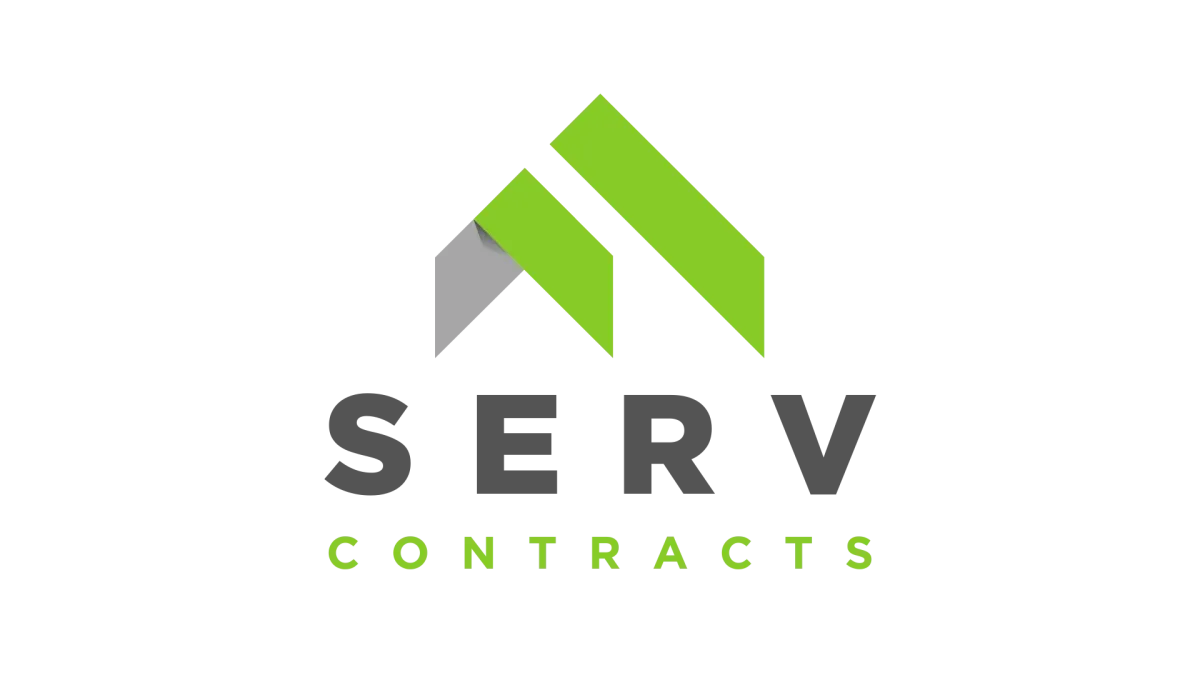
Roller Shutters for Your Business Premises: A Complete Guide
Commercial roller shutters offer a strong defence for your premises, improving energy efficiency and shielding your assets from the elements and noise. For facility managers and business owners across London and the South East, understanding the benefits and limitations of insulated, fire-rated, and general security shutters is crucial before making a purchase. This guide details how roller shutters enhance security, boost insulation, and streamline operations, while also outlining potential drawbacks from cost to upkeep. We'll cover product types, UK compliance standards, long-term return on investment, selection criteria, and answer your most common questions. By examining the advantages, disadvantages, regulations, and return on investment, you'll be well-equipped to decide if custom roller shutter installation with SERV Contracts LTD is the right choice for your commercial property.

What Are the Key Benefits of Commercial Roller Shutters for Businesses?
Commercial roller shutters are robust coverings that provide security and insulation by creating a protective barrier against break-ins, heat loss, and noise pollution. Their construction, featuring steel or aluminium slats, optional foam cores, and remote operation, offers businesses enhanced physical protection, reduced energy expenses, and greater operational convenience.
How Do Roller Shutters Enhance Security and Protect Commercial Properties?
Roller shutters bolster perimeter security by resisting forced entry through their interlocking slats and dependable locking mechanisms.
They act as a visual deterrent to vandalism with their strong steel construction.
Integrated locking bars prevent the removal of individual slats.
Built-in alarms activate upon any unauthorised movement.
These shutters serve as the primary defence against theft and break-ins, setting the stage for their energy-saving insulation benefits.
In What Ways Do Insulated Roller Shutters Improve Energy Efficiency?
Insulated roller shutters minimise heat transfer by trapping air within a foam-filled core, reducing thermal conductivity and lowering the demand for heating and cooling.
A reduced U-value leads to better internal climate control.
The foam infill limits heat loss during winter and heat gain in summer.
Less frequent use of HVAC systems translates to lower utility bills.
By incorporating energy-efficient materials, these shutters support sustainable building management and complement their security functions.
Energy Efficiency and Roller Shutters: How They Can Help You Save Money
Research suggests that roller shutters can cut down heating and cooling energy consumption by as much as 30%, with the exact savings depending on factors like climate, window type, and shutter quality. These long-term savings can effectively offset the initial installation costs. This research directly supports the article's claim regarding the significant energy savings achievable with insulated roller shutters.
How Do Roller Shutters Reduce Noise and Increase Privacy in Commercial Spaces?
Roller shutters dampen external noise thanks to their multi-layer slat design, which absorbs sound waves, creating quieter working environments and safeguarding confidential operations.
Improved acoustic damping enhances concentration in office settings.
Solid profiles prevent visual access into internal areas.
Adjustable opening positions allow for a balance between natural light and privacy.
Enhanced acoustic and visual insulation naturally leads to considerations of weather-resistant performance.
What Weather Protection and Durability Advantages Do Roller Shutters Offer?
Commercial roller shutters are built to withstand wind, rain, and impacts from debris, thanks to their corrosion-resistant coatings and reinforced guide channels.
Galvanised steel offers excellent resistance to moisture-induced rust.
Powder-coated aluminium endures exposure to UV rays.
Sealed side channels effectively prevent draughts.
This durability extends the lifespan of the equipment and protects premises from harsh conditions, paving the way for discussions on streamlined operation.
How Does Operational Convenience and Space Saving Benefit Businesses?
Electric roller shutters offer the convenience of remote control operation, automated scheduling, and compact housing that preserves the building's facade.
Programmable controls simplify the management of access.
A manual override function ensures operation even during power outages.
Slim roller barrels maximise internal ceiling space.
Such ease of use improves daily workflows and naturally leads into considerations of installation costs and maintenance requirements.
What Are the Main Drawbacks and Disadvantages of Installing Roller Shutters on Commercial Properties?
Key disadvantages include the initial capital outlay, the need for ongoing servicing, solid profiles that can limit visibility, and the reliance on power for automated models. These factors can impact project budgets and operational flexibility.
Why Is the Initial Cost and Investment a Consideration for Commercial Roller Shutters?
The upfront expenditure covers materials, custom engineering, and professional installation, making roller shutters a significant investment for property enhancements.

These cost elements are vital for budget planning and transition into the discussion of regular maintenance demands.
What Maintenance Requirements Should Businesses Expect for Roller Shutters?
Roller shutters require periodic servicing to maintain their performance, ensure safety compliance, and extend their operational lifespan.
Clean slats, guides, and bearings to prevent the build-up of debris.
Lubricate roller barrels and locking components every six months.
Test manual override and safety sensors quarterly.
Schedule an annual professional inspection to check motor integrity and compliance.
How to Keep Your Commercial Roller Shutters Safety Compliant
UK regulations such as the Provision and Use of Work Equipment Regulations 1998 (PUWER) and the Workplace (Health, Safety and Welfare) Regulations 1992 require employers to ensure that work equipment, including roller shutters, is maintained in efficient and safe working order, with regular inspections and up-to-date maintenance logs. This citation confirms the legal obligations for the installation, maintenance, and safety of commercial roller shutters under key UK health and safety legislation.
Regular upkeep prevents operational downtime and leads to considerations of shutter design and aesthetics.
How Can Roller Shutters Limit Visibility and Affect Aesthetics?
Solid-profile shutters completely block sightlines, which can detract from a shopfront's appeal or the ingress of natural light. Perforated or grille designs offer partial transparency but with a slight reduction in their security rating. Balancing visibility needs with aesthetic impact is a key design decision that sets the stage for evaluating electric versus manual options.
What Are the Power Dependency Issues with Electric Roller Shutters?
Electric roller shutters depend on a stable power supply for their automated operation, making backup systems essential to prevent being locked in or out.
Manual override cranks must be tested to ensure accessibility during electrical outages.
Specifying UPS backups or integrated battery packs can mitigate downtime and help understand the available shutter types.
What Types of Commercial Roller Shutters Are Available and How Do They Differ?
A wide range of roller shutter options ensures tailored solutions for security, insulation, and fire protection needs.
Security Roller Shutters: Heavy-gauge steel or aluminium slats prioritise resistance to break-ins.
Insulated Roller Shutters: A foam-filled core enhances thermal and acoustic performance.
Fire Rated Roller Shutters: Tested to BS EN 16034 for fire containment for up to four hours.
Manual vs Electric Shutters: Manual units operate via hand cranks; electric models feature motors, remote control, and automation.
These categories help clarify compliance needs and cost variations, which are addressed in the next section.
What UK Regulations and Compliance Standards Apply to Commercial Roller Shutters?
Roller shutters must comply with UK health and safety legislation and fire safety standards to ensure lawful installation and operation.
What Are the Key UK Safety Regulations for Roller Shutter Installation and Use?
The Supply of Machinery (Safety) Regulations 2008 and PUWER 1998 mandate correct installation, guarding of moving parts, and risk assessments for powered equipment. Installers must provide operating manuals, emergency stops, and proof of conformity.
How Do Fire Safety Standards Like BS EN 16034 Affect Roller Shutter Requirements?
Fire-rated shutters require CE marking under BS EN 16034 and integration with building fire alarm systems. They must be tested for integrity, insulation, and smoke control for a specified duration to meet building regulations.
What is the British Standard for Fire-Rated Roller Shutters?
BS EN 16034:2014 establishes the UK standard for fire-rated roller shutters, ensuring they are tested and certified to prevent the spread of fire and smoke for durations ranging from 60 minutes to 4 hours, and meet CE-marking requirements. This citation verifies the UK compliance standards for fire-rated roller shutters, including the mandatory CE marking under BS EN 16034.
What Are the Maintenance and Inspection Obligations Under UK Law?
Under PUWER and the Workplace (Health, Safety and Welfare) Regulations 1992, powered shutters require documented inspections at least once a year and maintenance logs to demonstrate ongoing compliance and safety performance.
How Do Commercial Roller Shutters Impact Costs and Return on Investment (ROI)?
While the initial investment can be substantial, the cumulative savings from improved security, reduced energy consumption, and lower insurance premiums often justify the expense over the shutter's lifespan.
What Factors Influence the Pricing of Commercial Roller Shutters?

How Can Insulated Roller Shutters Lead to Long-Term Energy Savings?
Insulated shutters can reduce annual heating and cooling expenses by up to 30 percent through enhanced U-values and reduced HVAC operating times, often leading to payback periods of less than five years.
What Is the Overall ROI of Installing Roller Shutters for Commercial Properties?
Combining reduced losses from theft, energy savings, and insurance discounts results in annual ROI rates of 15–25 percent, with full cost recovery typically achieved within five to eight years.
How Can You Choose the Right Roller Shutters for Your Commercial Property?
Selecting the optimal shutter involves balancing security, insulation, and regulatory requirements against your budget and operational context.
What Should Businesses Consider When Assessing Their Security and Insulation Needs?
Evaluate risk profiles for theft and vandalism alongside desired U-values and acoustic ratings to determine whether security-only, insulated, or dual-function shutters are the most suitable choice.
How Do Location and Property Type Influence Roller Shutter Selection?
Urban locations in London might favour high-security steel shutters with automated controls, whereas rural warehouses could benefit more from insulated aluminium models for energy efficiency across large openings.
Why Choose SERV Contracts LTD for Bespoke Roller Shutter Solutions?
SERV Contracts LTD provides 24/7 support, custom steel fabrication, and certified installation services throughout London and the South East. Their proactive maintenance plans and expertise in BS EN 16034 ensure compliant, reliable shutter systems that meet the unique demands of every commercial property.
What Are Common Questions About Commercial Roller Shutters?
Industry professionals frequently inquire about whether roller shutters offer good value for money, which legal standards apply, typical pricing, and ongoing maintenance obligations.
Are Roller Shutters Worth It for Commercial Properties?
Roller shutters are a worthwhile investment when enhanced security, reduced energy bills, and weather protection collectively minimise operational risks and utility expenses over time.
What Are the Legal Requirements for Commercial Roller Shutters in the UK?
Legal obligations include CE marking for fire-rated shutters under BS EN 16034, compliance with PUWER and Machinery Directive requirements, and mandatory annual safety inspections.
How Much Do Commercial Roller Shutters Typically Cost?
Commercial roller shutters typically range from £70 to £250 per m², depending on the material grade, insulation level, and automation features, with custom sizing influencing final quotes.
What Maintenance Is Required to Keep Roller Shutters Compliant and Functional?
Routine cleaning, lubrication, and sensor testing every six months, along with annual professional inspections, are necessary to maintain performance and meet HSE and PUWER standards.
Installing roller shutters offers a comprehensive solution that safeguards assets, manages climate control, and supports compliance across commercial premises. By carefully weighing the benefits against the costs and aligning your choices with your property type, you ensure lasting value and operational efficiency. For bespoke design, installation, and maintenance of high-performance roller shutters in London and the South East, contact SERV Contracts LTD to explore tailored solutions that fit your business needs.
Conclusion
Investing in commercial roller shutters provides significant advantages, including enhanced security, improved energy efficiency, and noise reduction for your business premises. Understanding the balance between these benefits and potential drawbacks is essential for making an informed decision that aligns with your operational needs. To explore tailored roller shutter solutions that meet your specific requirements, reach out to SERV Contracts LTD today. Ensure your commercial property is protected and efficient with our expert services.
